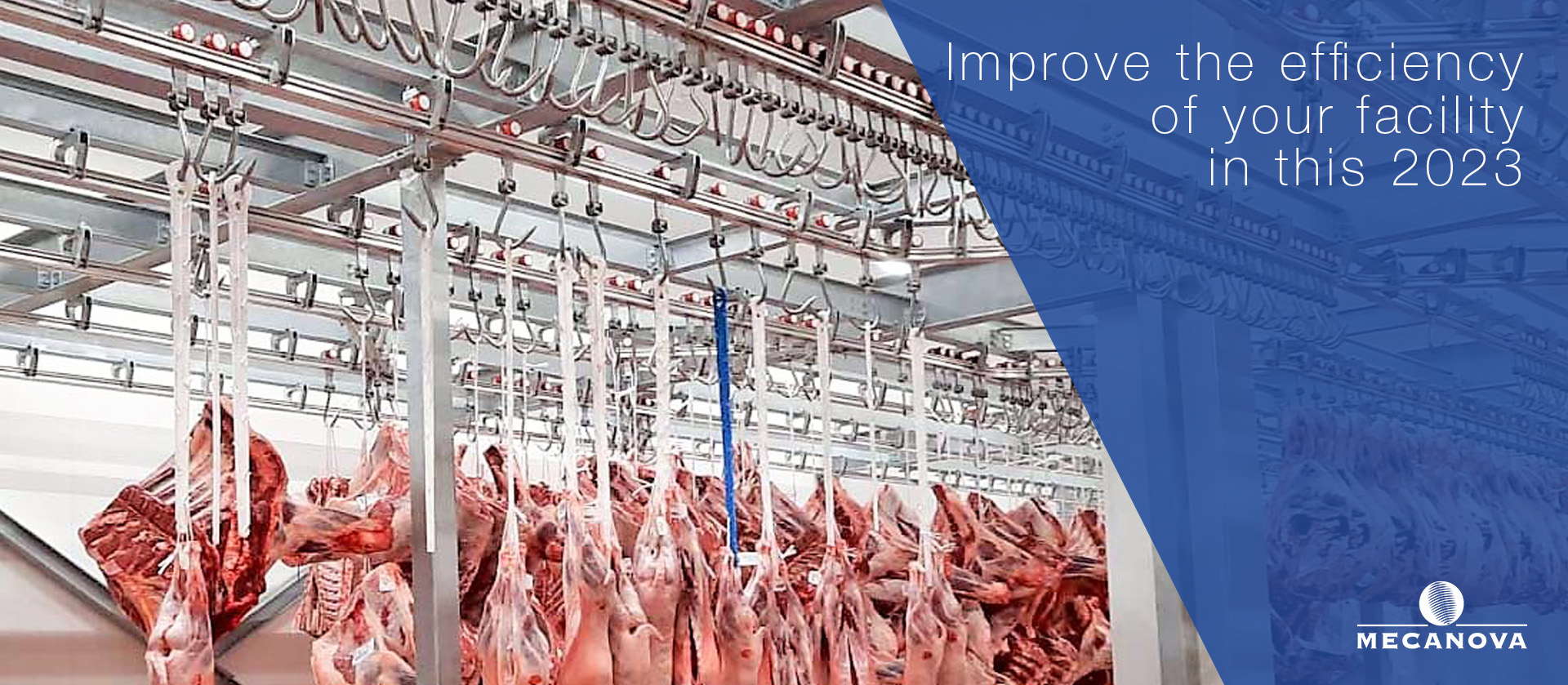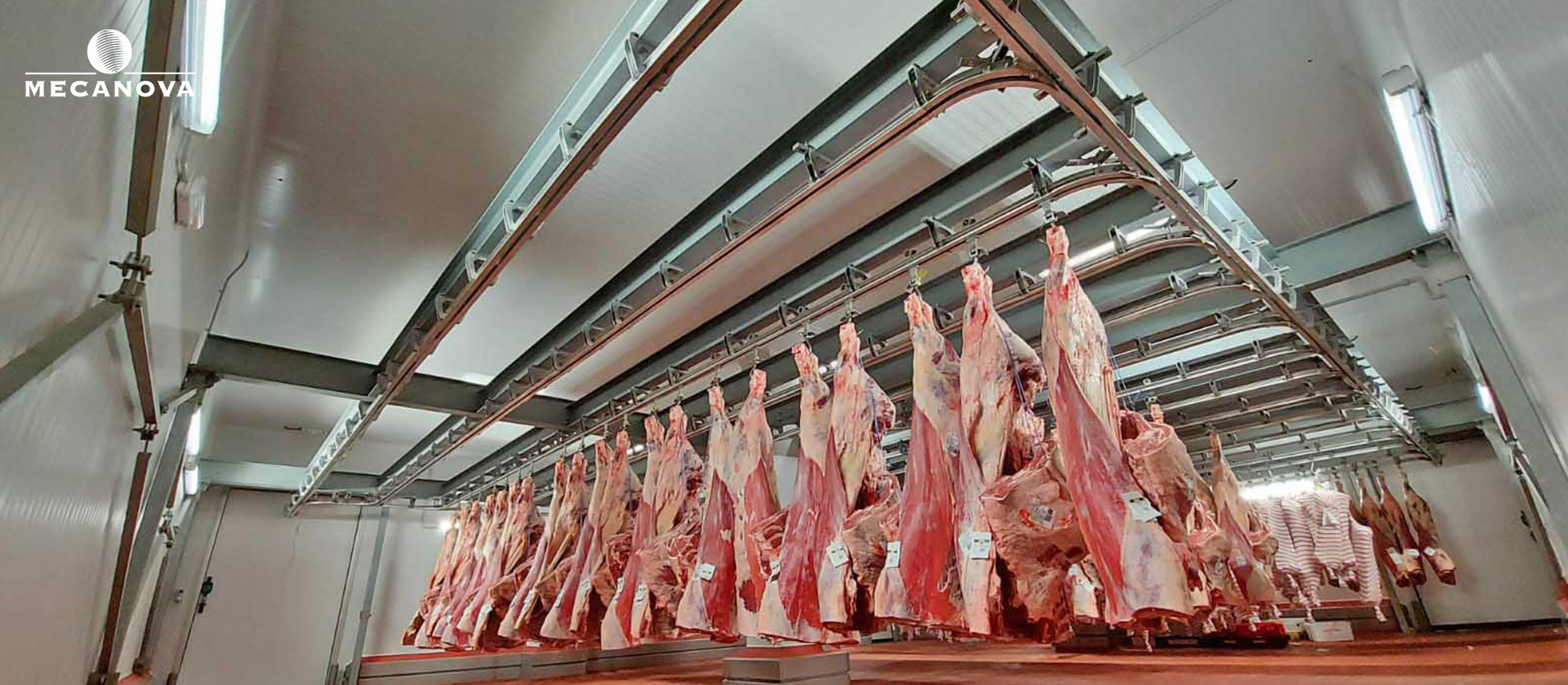Efficiency in slaughterhouses. How will it be increased in 2023?

The increase in production costs, the downward fluctuations in the price of meat internationally, the globalization of meat markets and the consequent increase in the markets for imported meat, make it increasingly necessary to permanently seek efficiency in slaughterhouses.
Optimization and efficiency of the meat industry
From our point of view, optimization can be based on:
- Automation of operations that are carried out manually. In any slaughter line, regardless of production and its age, operations can be automated with a cost that is recovered between 1 and 2 years, which results in increased efficiency.
- Reduction of energy consumption. Slaughter lines are intensive in energy consumption:
- Pork lines require steam and hot water to blanch the carcasses. An efficient line design with a modern system suitable for production reduces the production cost of a slaughter line by more than 20%.
- In the previous line and in those for cattle and sheep, the consumption of water for sterilization, carcass washing and cleaning in general, implies a high energy cost in heating the water and its subsequent purification, for this reason a linear, compact and Automated system reduces water and energy consumption, resulting in savings of up to 15%
- The cooling of the carcasses and in many cases the subsequent freezing represents the highest energy bill in a meat industry. To increase efficiency we recommend:
- Realistic calculations of camera needs.
- Cold systems executed by the best and most experienced cold experts.
- Quick channel oreos.
- A calculation of refrigeration capacity that allows carcass cooling and freezing in less than 24 hours.
- Reduction of the loss of the product. This is an important competitive advantage. To control the loss of product, it is necessary to control all phases of production, from the transport and management of animals in pens, to the distribution and automation of the cutting room. The reduction in shrinkage and the improvement in meat quality that can be achieved with a good design and better equipment in rapid phased drying is very significant. In this case, the loss can be reduced from 2.8% to 1%, that is, an improvement in product of 1.8%. These quick oreos, despite the high investment cost, achieve recoveries in less than 12 months only in terms of kg of meat produced. In addition, they mean reducing the cooling time to 13 hours in pigs, and 24 hours in beef, with the consequent savings in cameras and electricity.

Technology for efficiency in slaughterhouses
The permanent technological development facilitates and permanently expands all the possibilities of optimization and improvement of efficiency in slaughterhouses by way of example and without intending to collect many of these possibilities: Internet and the ease of communication and holding online meetings, makes it possible to search of the best providers of solutions and technologies anywhere in the world.
Remote assistance and diagnosis in equipment maintenance tasks allows suppliers to monitor machines and facilities from any continent, eliminating or reducing costs due to breakage or stoppage, or simply the costs of assistance due to changes in the scala software.
Overall, the use of advanced machinery in slaughterhouses is expected to improve the efficiency of the meat industry by the year 2023. By reducing the need for human labor and improving the precision and consistency of the final product, these technologies will help meet the growing demand for meat while reducing waste and improving animal welfare.




